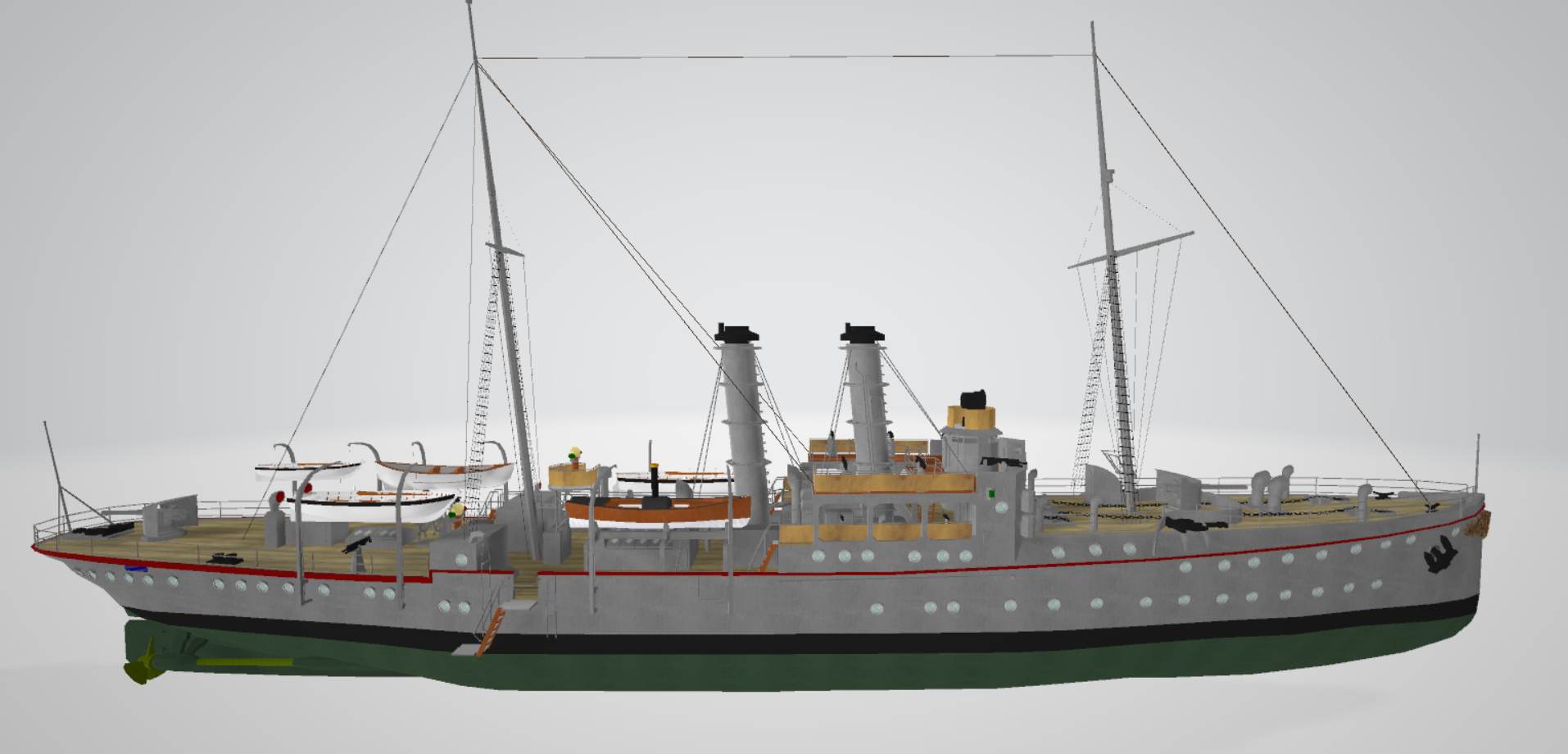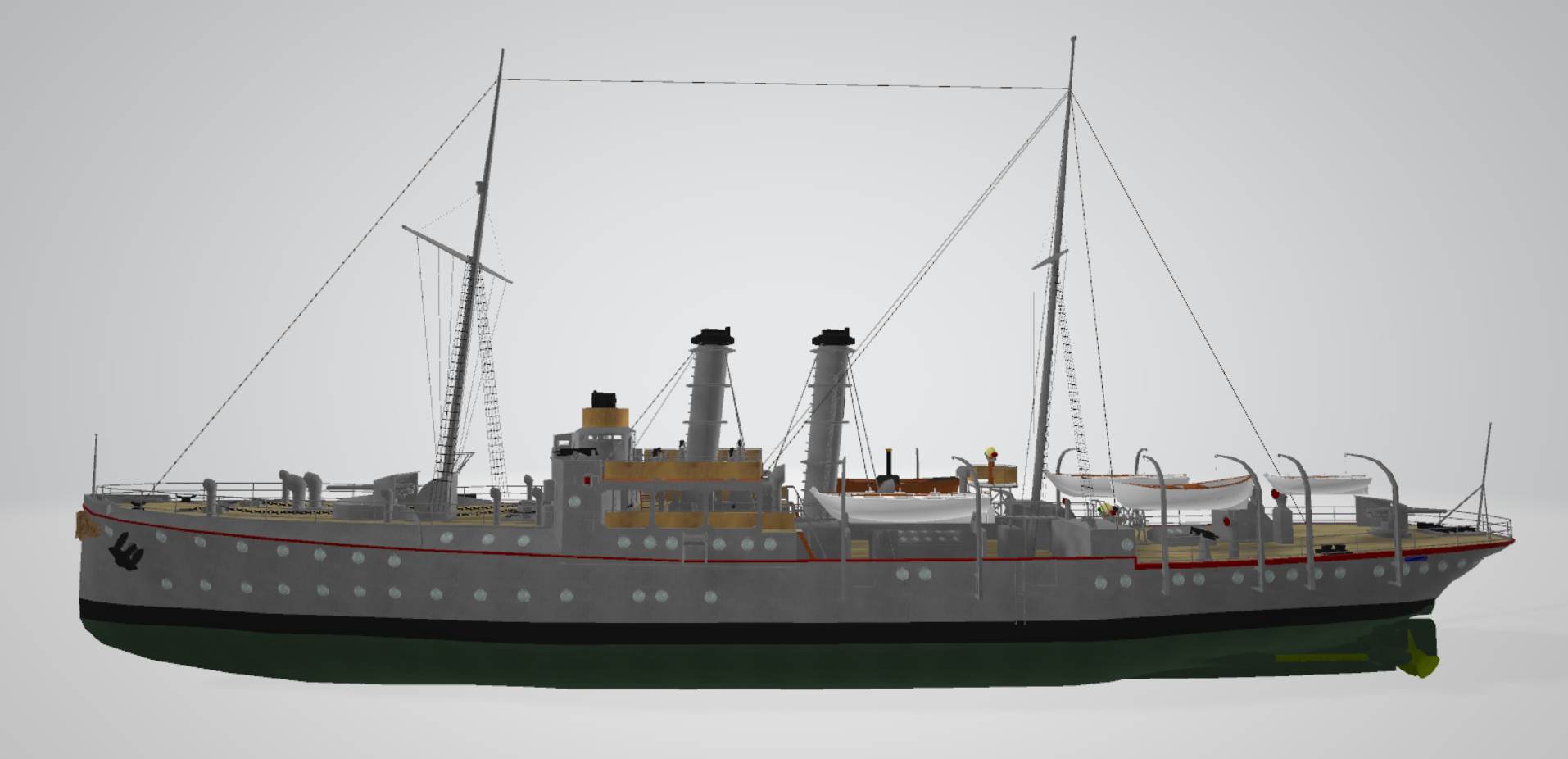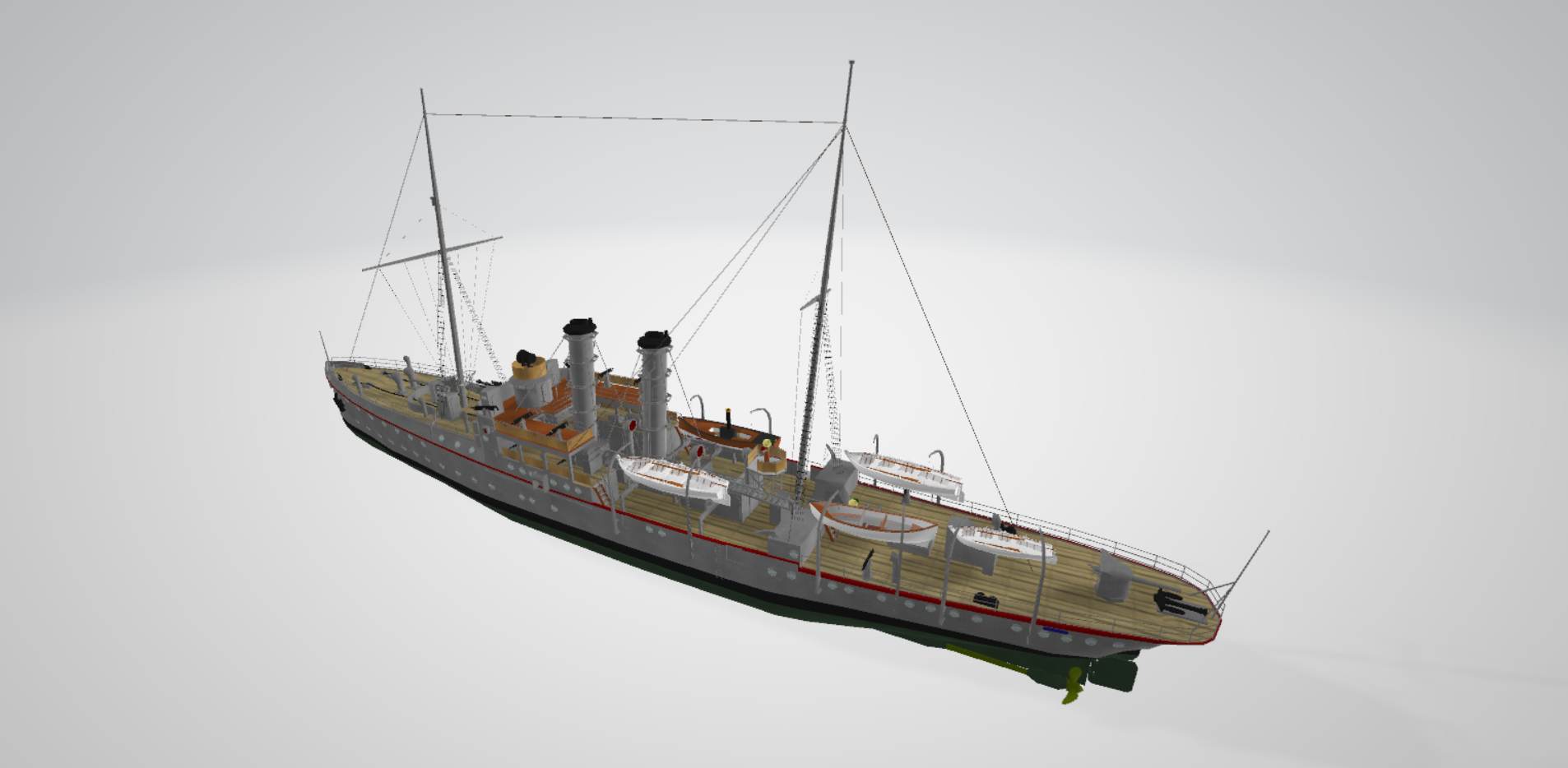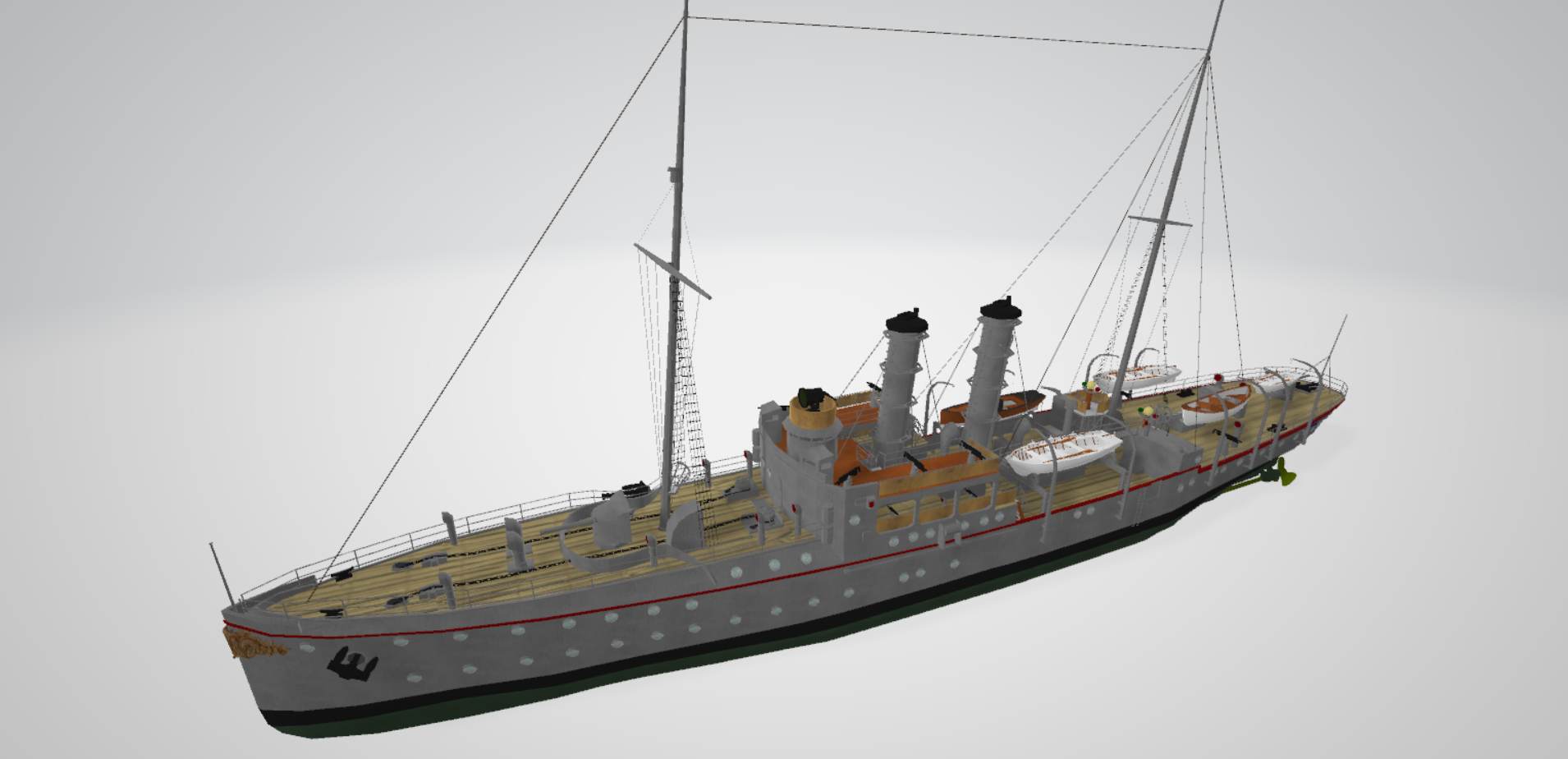

SMS PANTHER 1902
ONLY £ 25 EACH FOR ALL MODELS (Including for commercial use) !
VIEW OR BUY AND DOWNLOAD THIS PRODUCTCLICK ON A PICTURE BELOW FOR LARGER IMAGE
 |
 |
 |
 |
SMS Panther
SMS Panther was one of six Iltis-class gunboats of the Kaiserliche Marine. like its sister ships, it served in Germany's overseas colonies.
The ship was laid down at the Kaiserliche Werft, Danzig in 1900 and launched on 1 April 1901 and was commissioned into the German fleet on 15 March 1902.
In September 1902, after the Haitian rebel ship Crête-à-Pierrot hijacked the German steamer Markomannia and seized weapons destined for the Haitian government.
Germany sent Panther to Haiti and Panther found the rebel ship.
The rebel Admiral Killick evacuated his crew and blew up Crête-à-Pierrot, which was by then under fire from Panther.
There were concerns about how the United States would view the action in the context of the Monroe Doctrine.
But despite legal advice describing the sinking as "illegal and excessive", the US State Department endorsed the action.
The New York Times declared that "Germany was quite within its rights in doing a little housecleaning on her own account".
In December 1902, the Panther was in the German contingent in the Naval
Blockade of Venezuela, during this she bombarded the settlement of Fort
San Carlos, near Maracaibo.
The shallow waters that connected Lake Maracaibo with the sea were passable for major ships only in the strait that separated San Carlos from the island of Zapara.
Yet even there it needed the help of a local pilot to avoid the sand banks and shallow waters of the passage.
The battle started when the fort's gunners opened fire as Panther was crossing the bar. Panther returned fire, but the shallow waters limited its effectiveness.
Inside the fort, two gunners (Manuel Quevedo and Carlos José Cárdenas) scored several hits on Panther with their 80-millimeter Krupp gun, causing considerable damage.
After half an hour of exchanging fire, the Germans retreated.
In 1905, Panther was sent to the Brazilian Port of Itajahy, where its crew
conducted an unauthorized search in their pursuit of a German deserter by
the name of Hassman.
They ended up kidnapping, inexplicably, the German Fritz Steinhoff. This incident became known as the "Panther Affair" ("Caso Panther").
Panther became notorious in 1911 when it was deployed to the Moroccan port
of Agadir during the "Agadir Crisis" (also called the "Second
Moroccan Crisis").
In 1911, SMS Panther then left the German colony of Cameroon and was to take up coal in Morocco on the way home.
As a result of the ongoing crisis in Morocco, the Admiral's staff made a request to the Foreign Office for the ideal location for accepting coal on 8 March 1911.
The office called the location Agadir, as it is far enough from the French area, but still close enough to signal German interests.
In this so-called Panther Leap to Agadir the diplomatic situation between France and England and Germany became more acute.
France saw its interests being threatened by the German ship.
Panther was dispatched on the pretext of protecting (non-existent) German citizens in the port.
A German sales representative, Hermann Wilberg, had been sent to Agadir on behalf of the Foreign office, but only arrived three days after Panther.
The ship's actual mission was to apply pressure on the French, as they attempted to colonize Morocco, to extract territorial compensation in French Equatorial Africa.
SMS Panther was in the harbor in the period from 1 to 20 July 1911 until it was replaced by the cruisers SMS Berlin and SMS Eber.
This was an example of "gunboat diplomacy".
The incident contributed to the international tensions that would lead to the First World War.
Then the ship arrived in Hamburg on August 19, 1911, to be overhauled in Danzig.
In early 1912, the Panthers left the German Empire again and visited first Southampton and Lisbon.
It was then sent to Liberia in November to watch there together with the SMS Eber and SMS Bremen, the local unrest.
In April 1913, the Panther took again to surveying tasks in the German colonies.
From May 13 to July 9, 1914, the ship was in Danzig and overhauled again.
A subsequent trip to Mexico was canceled because of the tense political situation in Europe.
At the outbreak of the First World War, the SMS Panther was assigned to the Coast Guard Division.
She towed submarine SMS U-3 to near Gotland to fight Russian ships.
The Panther did not participate in any further operations during the war.
After the war, the ship was decommissioned on December 18, 1918.
Because of her old age, the Panther did not have to be handed over to the victors.
On December 15, 1926, it was decommissioned and in 1931 deleted from the list of warships and then scrapped.
VIEW OR BUY AND DOWNLOAD
THIS PRODUCT
BACK TO INDEX
(c) Copyright .................Virtual Dockyard.....................2021